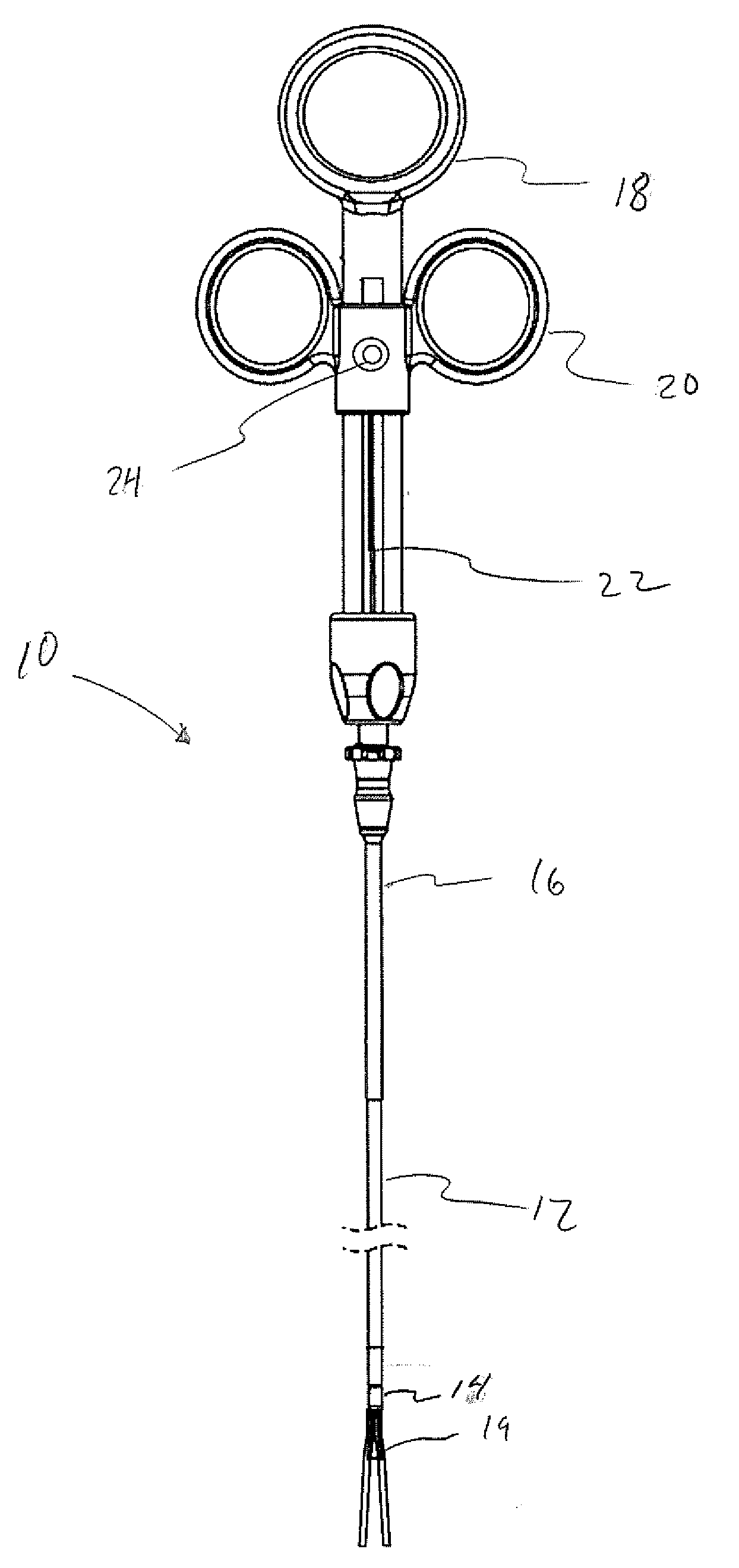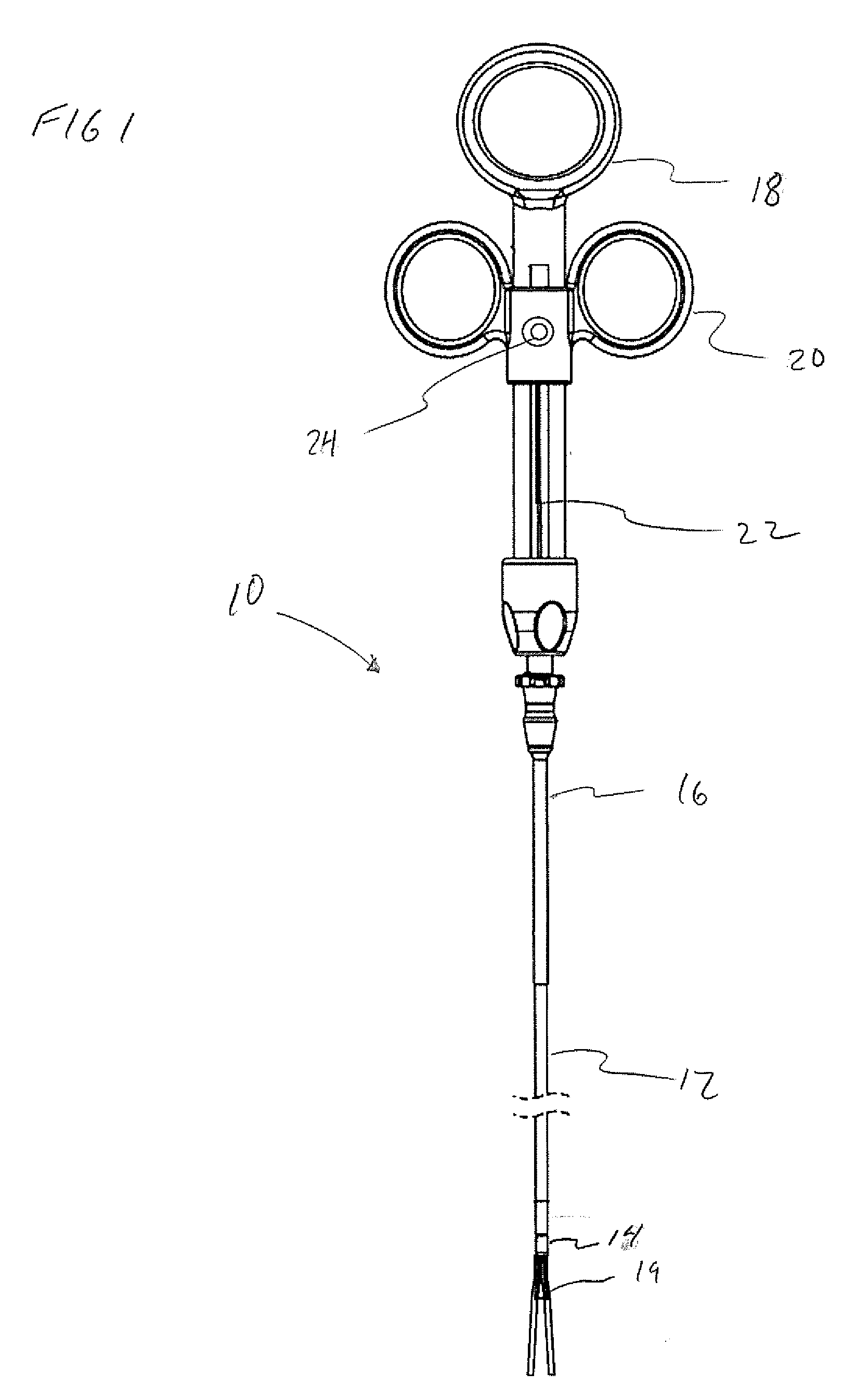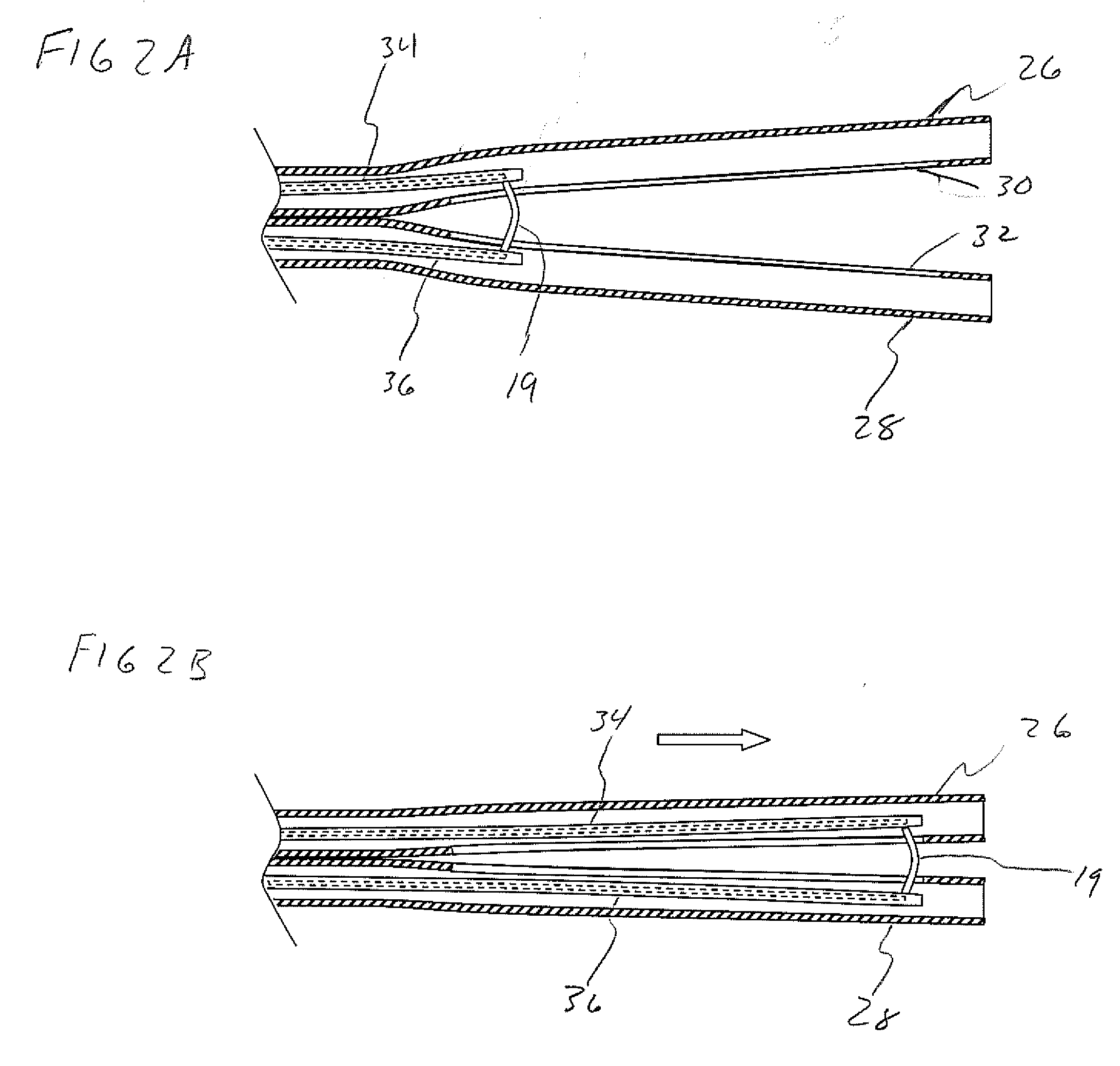Tissue Resection Device
a resection device and mucosal technology, applied in the field of mucosal resection devices, can solve the problems of large flat mucosal lesions removed in a single operation, numerous problems for current endoscopic tools and techniques, and inability to perform full thickness biopsies
- Summary
- Abstract
- Description
- Claims
- Application Information
AI Technical Summary
Benefits of technology
Problems solved by technology
Method used
Image
Examples
Embodiment Construction
[0028]FIG. 1 illustrates a tissue resection device for performing a submucosal medical procedure to resect a portion of the mucosal layer in the digestive tract of a mammal according to an embodiment of the present invention. The tissue resection device 10 includes an elongate catheter 12 having a distal end 14, a proximal end 16 and a lumen extending therethrough. Handle assembly 18 is coupled to the proximal end 16 of catheter 12 and electrosurgical loop cutter wire 19 is positioned at the distal end. Handle assembly 18 includes a slide assembly 20 which is fixedly coupled to the proximal end of the cutting wire actuator 22 of the electrosurgical loop cutter wire 19. Slide assembly 20 includes an electrical connector 24 which is in electrical contact with proximal end 22 and facilitates the coupling of an electrosurgical generator to supply energy to cutter wire 19.
[0029]FIGS. 2A and 2B illustrate the distal end of tissue resection device 10 in more detail showing a partial cross ...
PUM
 Login to View More
Login to View More Abstract
Description
Claims
Application Information
 Login to View More
Login to View More - R&D
- Intellectual Property
- Life Sciences
- Materials
- Tech Scout
- Unparalleled Data Quality
- Higher Quality Content
- 60% Fewer Hallucinations
Browse by: Latest US Patents, China's latest patents, Technical Efficacy Thesaurus, Application Domain, Technology Topic, Popular Technical Reports.
© 2025 PatSnap. All rights reserved.Legal|Privacy policy|Modern Slavery Act Transparency Statement|Sitemap|About US| Contact US: help@patsnap.com



